As riders of Metro-North, we are quite familiar with the Hudson River. It serves as an important dividing line of the system – west-of-Hudson service, operated by New Jersey Transit, and the more familiar east-of-Hudson service which is comprised of the Harlem, New Haven and Hudson Lines. For those that still use Metro-North’s website for scheduling, acknowledging on which side of the river you fall is still a necessity. Besides providing a dividing line for Metro-North, the river has always been an important part of the landscape of New York. Boats on the river have been commonplace for hundreds of years, and although we hardly think of boats as a significant method of transportation today (beyond short jaunts or luxury cruises), sloops and steamboats were once a staple on the river for moving both people and freight.
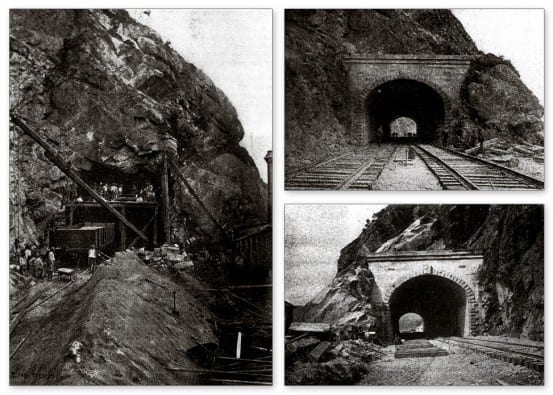
Construction photographs of one of the tunnels on the Hudson Line
The river has also played a significant role in shaping the railroads of our area. When plans were made for a railroad from New York City to Albany, an inland route was chosen as to not compete with the already existing shipping lanes on the river. This inland route was, of course, The New York and Harlem Railroad, or today’s Harlem Line. But besides the ships, the idea of building a railroad along the Hudson was avoided because of the immense challenge and expense of cutting through the Hudson Highlands. When the railroad was ultimately built, large amounts of rock had to be excavated – on the sixteen mile portion from Peekskill to Fishkill alone, over 425 thousand cubic yards of rock had to be removed. Winters on the Hudson proved to be the major factor in finally building the Hudson River Railroad, as although ships were well established, there were many times that the river was unpassable due to ice. Trains were a perfect solution – not only could they operate in weather that boats could not, they were also much quicker.
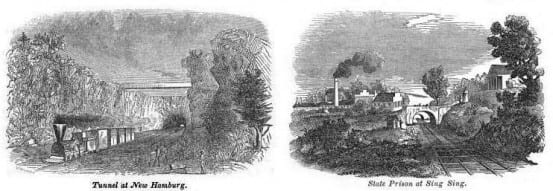
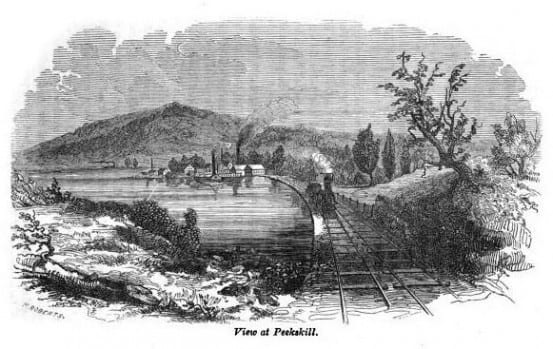
1851 woodcuts of spots along the Hudson River Railroad – New Hamburg, Ossining, and Peekskill
When the railroad opened on on September 29th, 1849 it stretched from New York to Peekskill – a distance of forty miles. By the end of 1849 the railroad had reached all the way to Poughkeepsie. Over that span of track, eight tunnels bored through solid rock were required, totaling 3595 feet. The cost of the railroad was around nine million dollars, or roughly 233 million in today’s dollars. It is interesting to note that the weather played a part in determining the fares in the railroad’s early years. According to the railroad’s charter, fares from New York to Albany were not to exceed three dollars. When there was no other competition in the winter, tickets would be full price. In the summer months the fares likely fluctuated due to competition with steamships – even though the trip by train shaved several hours off the journey.
By 1864 the Hudson River Railroad had come under the control of Cornelius Vanderbilt, and he merged it with the New York Central to form the New York Central and Hudson River Railroad. The line was an important part of the famed “Water Level Route” which, expectedly, followed various bodies of water and was relatively flat.
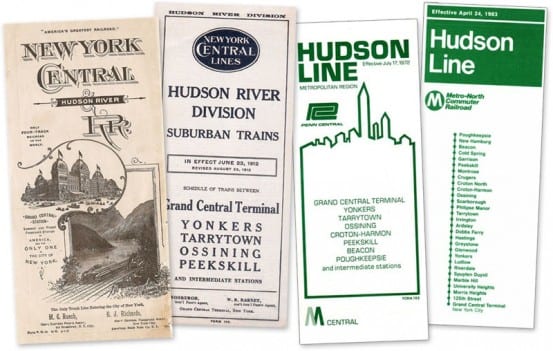
Timetables along the Hudson Line, from 1901, 1912, 1972, and 1983.
Despite the railroad’s difficulties over the years, transitioning from New York Central to Penn Central, Conrail, and later Metro-North, this portion of rail has always been an important link to Albany and beyond. Besides Metro-North’s commuter trains, Amtrak also operates here, making stops at Yonkers, Croton-Harmon, and Poughkeepsie.
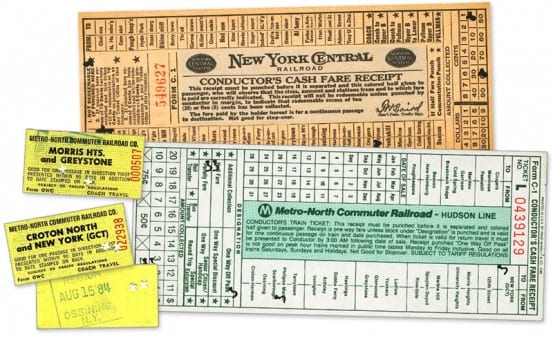
Cash fare receipts and tickets from the Hudson Line. From the collection of Otto Vondrak.
It is the Hudson Line that we now turn our attention to, as our highly-anticipated Tuesday Tour of the Hudson Line begins tomorrow. The Hudson Line is the last Metro-North line to be featured here, and is sure to be a treat. Like our previous tours of the Harlem and New Haven Lines, stations will be presented in no particular order, as I am still exploring and photographing.


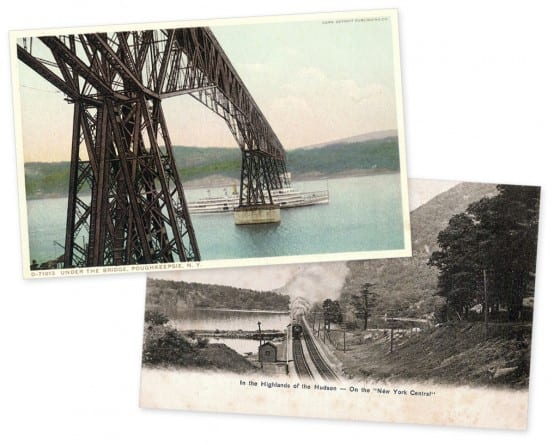
Woo hoo! You’ve saved the best for last!
As it happens, I was at Croton-Harmon yesterday (picking up a friend from the Clearwater Festival at Croton Point Park) and saw a couple Amtrak trains come and go while waiting for her to take the shuttle bus from the park. Judging from the size of the parking lot, it looks like it’s a busy station (or “station stop” as they inexplicably say).
The Hudson line was the 1st line to get High level platforms,from
Harmon to MO tower in advance of the M-1’s arrival.
It’s no suprize that almost all of the platfroms needed to be rebuilt.
The view of the Poughkeepsie Bridge compells me to mention the railroad bridge that spanned the Firth of Tay in Scotland ; both were constucted at about the same time , but the Tay Bridge , which took five years to construct, “endured” for only five months. The bridge collapsed in 1879 when a train bearing 75 passengers was half-way across the bridge in the midst of a ferocious gale.
Love this website. Awesome artifacts. The Hudson Line is my home line and while I’m not a commuter no pleasure trip to NYC to see a Yankees or Mets game, go to a museum, or just see the Christmas stuff is complete without a trip on the Hudson Line from Poughkeepsie on Metro North or the stately Amtrak depot in Rhinecliff with it’s stately ex NYC statione complete with Spanish tiles on the roof and arched windows I think it was built in 1914 so it is close to 100 years old. I love the awesome scenery and the interesting history of the railroad and the towns it passes through. I’ve been a lifelong lover of all things rail and I’ve also developed an interest in the Revolutionary period so you can’t get a better combo of those two, than a trip on the Hudson Line. Hard to imagine that the tranquil Highlands section was once one of the most strategic areas during America’s War for Independence, and that coincidently that the third rail ends at Croton-Harmon, which was the Northern end of majority loyalist territory. Looks like us “rebel’s are stuck with p32’s and Maxi-Bomb sets or Amfleet’s.